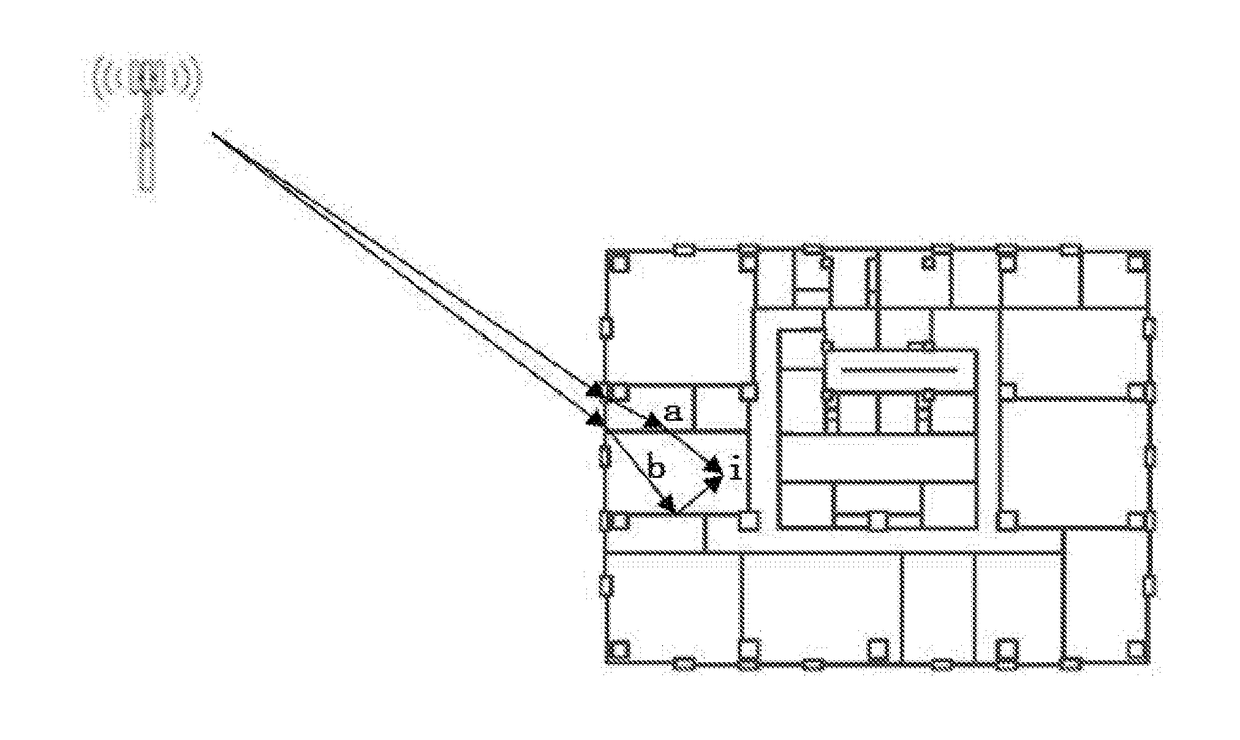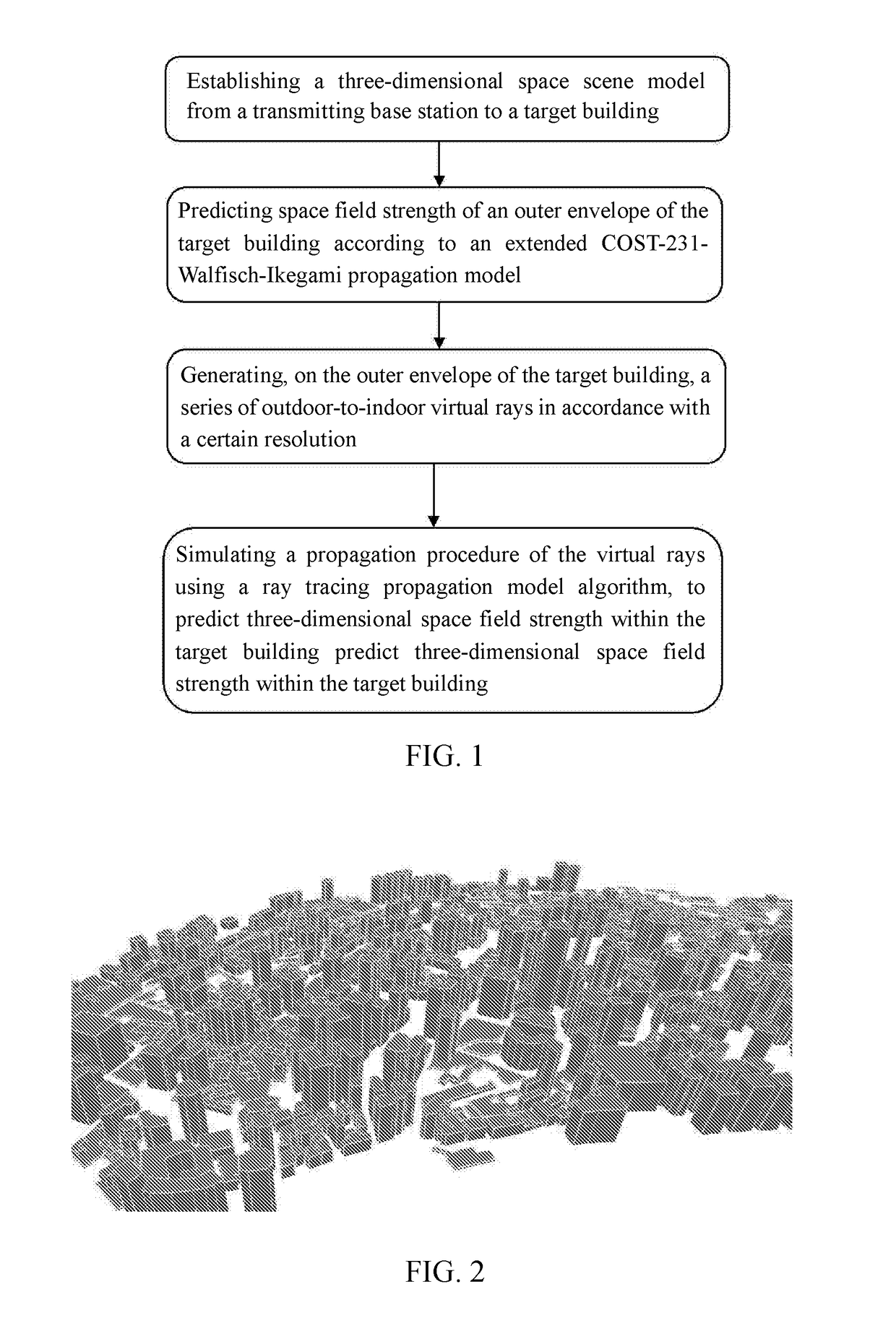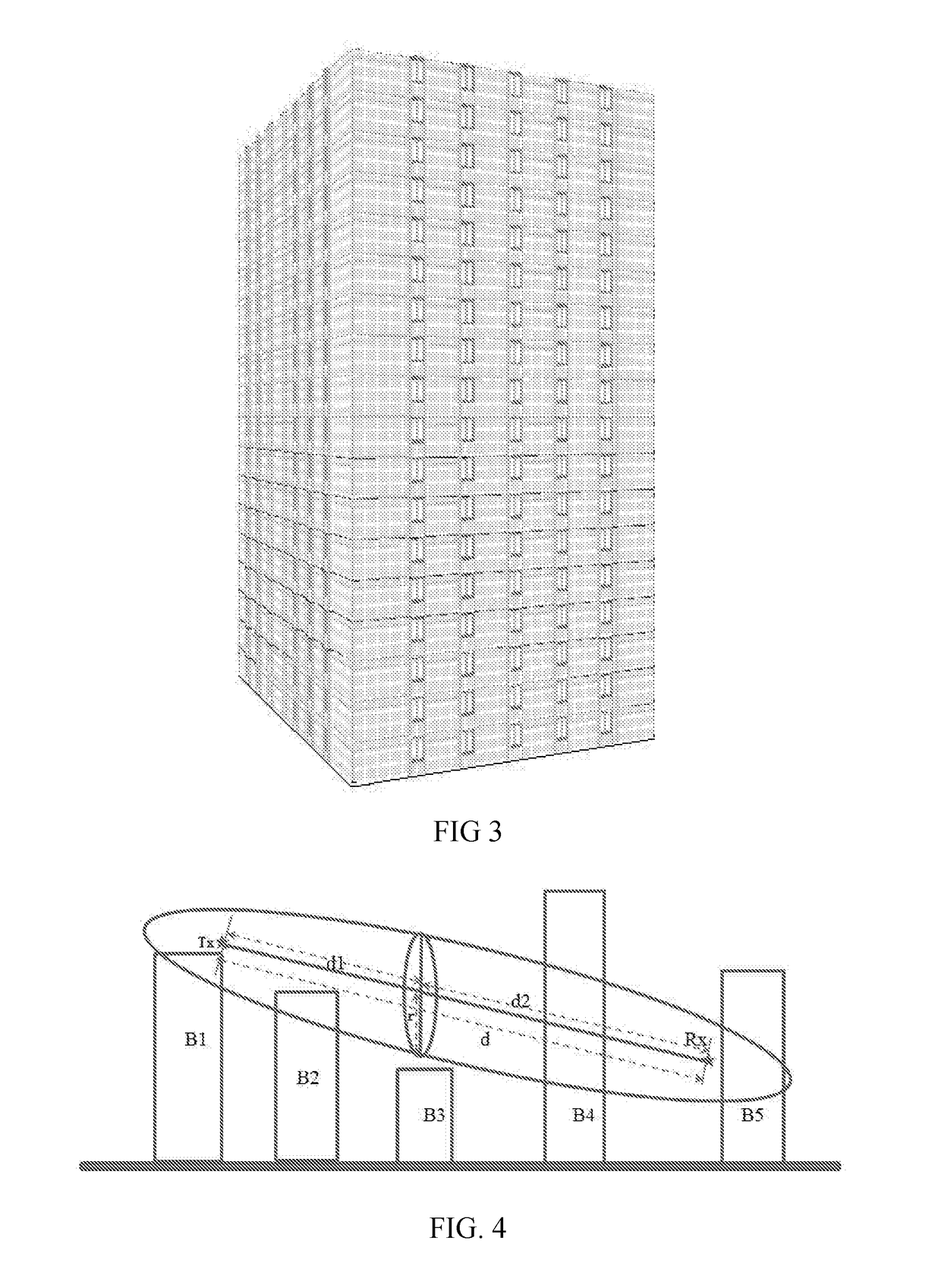Method for predicting indoor three-dimensional space signal field strength using an outdoor-to-indoor propagation model
a propagation model and indoor three-dimensional space technology, applied in the direction of transmission, transmission monitoring, electrical equipment, etc., can solve the problems of low calculation efficiency, low calculation efficiency, and low calculation efficiency of empirical models, and achieve high validity, good equilibrium, and strong engineering applicability
- Summary
- Abstract
- Description
- Claims
- Application Information
AI Technical Summary
Benefits of technology
Problems solved by technology
Method used
Image
Examples
embodiments
[0057]As shown in FIGS. 1-6,
[0058]the field strength generated by an outdoor base station antenna within its tenth floor of a building in a center region of a big city is predicted by using a method for predicting indoor three-dimensional space signal field strength by an outdoor-to-indoor propagation model according to the invention, wherein the building is 30 m high.
[0059]A step (1): establishing a three-dimensional space scene model from a transmitting base station to a target building according to a given GIS map of a region in a city that contains the predicted target building and a building drawing in CAD format of the target building, comprises the following three steps:
[0060]step (1-1): importing GIS map information according to given 5 m-accuracy GIS map information and using existing modeling technology to establish a three-dimensional scene model from the transmitting base station to a predicted region space, wherein the three-dimensional scene model comprises building ve...
PUM
 Login to View More
Login to View More Abstract
Description
Claims
Application Information
 Login to View More
Login to View More - R&D
- Intellectual Property
- Life Sciences
- Materials
- Tech Scout
- Unparalleled Data Quality
- Higher Quality Content
- 60% Fewer Hallucinations
Browse by: Latest US Patents, China's latest patents, Technical Efficacy Thesaurus, Application Domain, Technology Topic, Popular Technical Reports.
© 2025 PatSnap. All rights reserved.Legal|Privacy policy|Modern Slavery Act Transparency Statement|Sitemap|About US| Contact US: help@patsnap.com



